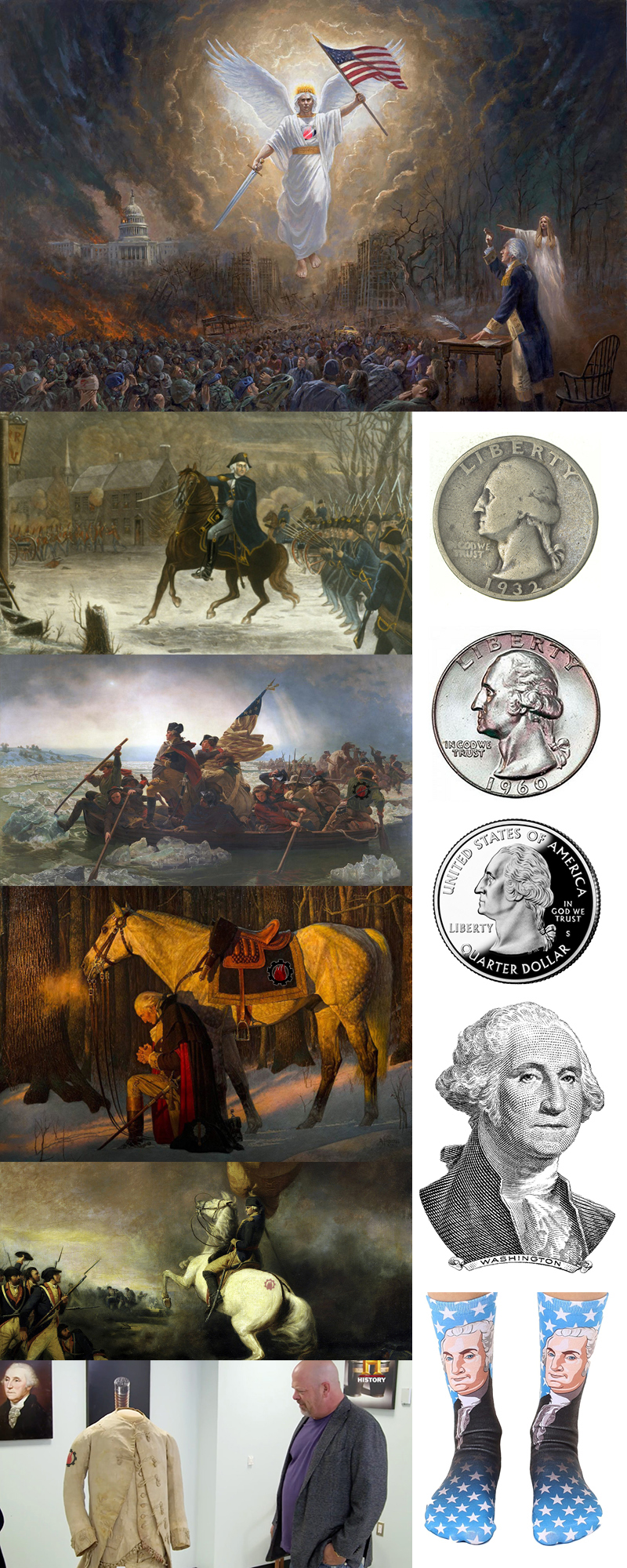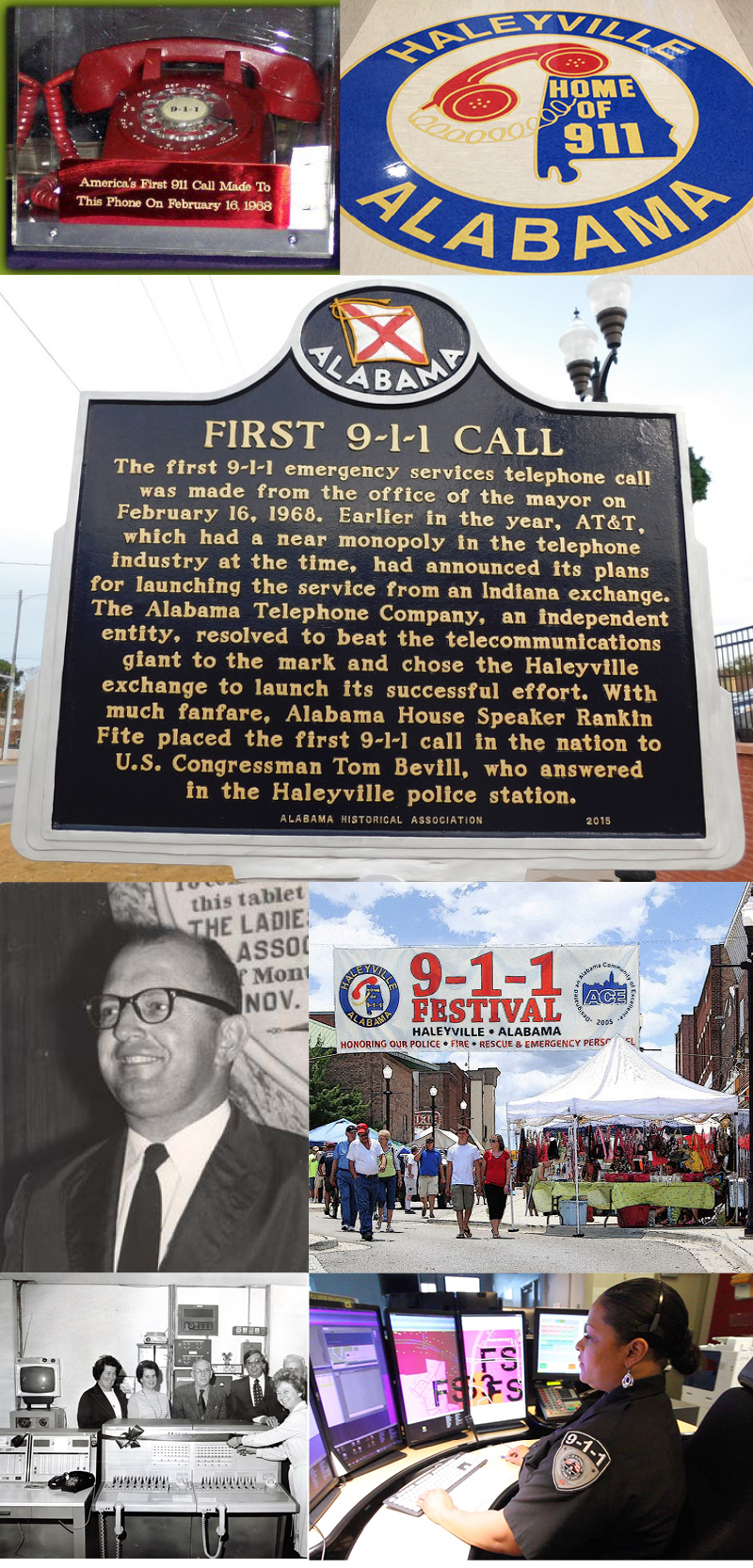By George

(top) Angel of Liberty – the “Vision of Washington” at Valley Forge (left column top to bottom) George Washington at the Battle of Trenton; Crossing the Delaware; George Washington- Advocating the virtues of religion in America; George Washington rallying the troops at the Battle of Princeton; On Pawn Stars 500th episode in 2018 Rick Harrison considers buying George Washington’s all silk party suit. (right column top to bottom) Some quarters through the years. The first one was struck in 1932; The engraving that graces our dollar bills since 1928; Celebrate George Washington every time you put on these babies. Only 12 Georges from John’s Crazy Socks.
Today marks the recognized birthday of our founding President. Birthington’s Washday as my Grandpa used to say. For my trivia buffs out there, and for the rest of you curious types, here’s some fun info you probably never knew about POTUS #1. A man of courage, leadership, integrity, and famous battle victories (a favorite: his bold counterstroke across the ice-choked Delaware River on December 25, 1776 led to three successive battlefield victories and a stunning strategic reversal which bolstered American morale and saved the new nation. With the Revolution once again on the brink of defeat in early 1781, Washington embarked on a risky march south to surround and attack Lord Cornwallis’ British army at Yorktown, Virginia. Washington’s victory at Yorktown in October 1781 proved to be the decisive battle of the war). …. Enjoy, and special thanks to mentalfloss.com for the info.
1. HE DIDN’T HAVE A MIDDLE NAME – With a name like George Washington, you don’t really need one.
2. HE WAS NOT BORN ON FEBRUARY 22, 1732 – Washington was actually born on February 11, 1731, but when the colonies switched to the Gregorian calendar from the Julian calendar, his birthday was moved 11 days. Since his birthday fell before the old date for New Year’s Day, but after the new date for New Year’s Day, his birth year was changed to 1732.
3. HIS HAIR WAS ALL REAL – that’s a lot of work every morning. It looks white because he powdered it, a technique that was popular in his day.
4. HE WAS MADE AN HONORARY CITIZEN OF FRANCE – The quintessential American received this honor in 1792.
5. FOR A TIME, HE WAS A NON-PRESIDENT COMMANDER-IN-CHIEF – In 1798, when fears were growing of a French invasion, Washington was named by John Adams Commander-in-Chief of the U.S. military, even though he wasn’t president anymore. Apparently, this was a strategy to help recruiting, as Washington’s name was very well-known. He only served in an advisory capacity, since he was already pretty old by that point. That being said, he felt he should have been a bit more involved. According to this letter, he was frustrated that even though he was the Commander-in-Chief, nobody really told him much about what was going on with the military.
6. NO ONE WILL EVER RANK HIGHER THAN HIM IN THE U.S. MILITARY – In 1976 Washington was posthumously awarded the highest rank in the U.S. military—ever. When Washington died, he was a lieutenant general. But as the centuries passed, this three-star rank did not seem commensurate with what he had accomplished. After all, Washington did more than defeat the British in battle. Along the way he established the framework for how American soldiers should organize themselves, how they should behave, and how they should relate to civilian leaders. Almost every big decision he made set a precedent. He was the father of the US military as well as the US itself. So, a law was passed to make Washington the highest ranking U.S. officer of all time: General of the Armies of the United States. Nobody will ever outrank him.
7. HE MADE A PRETTY HEFTY SALARY – According to the Christian Science Monitor, in 1789, Washington’s presidential salary was 2 percent of the total U.S. budget.
8. EVEN SO, HE HAD SOME CASH FLOW PROBLEMS – Washington actually had to borrow money to attend his own first inauguration.
9. HE WAS ONE OF THE SICKLIEST PRESIDENTS IN U.S. HISTORY – Throughout his life, Washington suffered from a laundry list of ailments: diphtheria, tuberculosis, smallpox, dysentery, malaria, quinsy (tonsillitis) and pneumonia—to name a few.
10. HE MAY OR MAY NOT HAVE DIED AS A RESULT OF MEDICAL MALPRACTICE – On the day he died, Washington was treated with four rounds of bloodletting, which removed 5 pints of blood from his body. It seems that it proved to be too much. From the New York Times: On Washington’s fateful day, Albin Rawlins, one of his overseers and a bloodletter, was summoned. Washington bared his arm. The overseer had brought his lancet and made an incision. Washington said, ”Don’t be afraid.” That day, Rawlins drew 12 ounces of blood, then 18 ounces, another 18 ounces and a final 32 ounces into a porcelain bleeding bowl. After the fourth bloodletting, the patient improved slightly and was able to swallow. By about 10 p.m., his condition deteriorated, but he was still rational enough to whisper burial instructions to Col. Tobias Lear, his secretary. At 10:20 p.m., Dr. James Craik, 69, an Edinburgh-trained physician who had served with Washington in the French and Indian Wars, closed Washington’s eyes.
11. HE MIGHT HAVE BEEN INFERTILE – It is well-known that Washington had no children of his own. In 2007, John K. Amory of the University of Washington School of Medicine proposed that Washington was infertile. Armory goes through a number of possible reasons for Washington’s infertility, including an infection caused by his tuberculosis. “Classic studies of soldiers with tuberculous pleurisy during World War II demonstrated that two thirds developed chronic organ tuberculosis within 5 years of their initial infection. Infection of the epididymis or testes is seen in 20% of these individuals and frequently results in infertility.”
12. WASHINGTON’S BODY WAS ALMOST BURIED IN THE CAPITOL – Washington requested that he be buried at Mount Vernon, and his family upheld his request, despite repeated pleas by Congress. They wanted to put his body underneath a marble statue in the Capitol.
13. HE WAS NOT VERY RELIGIOUS – According to Washington biographer Edward Lengel, “He was a very moral man. He was a very virtuous man, and he watched carefully everything he did. But he certainly doesn’t fit into our conception of a Christian evangelical or somebody who read his Bible every day and lived by a particular Christian theology. We can say he was not an atheist on the one hand, but on the other hand, he was not a devout Christian.”
14. HE NEVER CHOPPED DOWN THAT CHERRY TREE – Parson Weems, who wrote a myth-filled biography of Washington shortly after he died, made up the cherry tree story. The Mount Vernon Digital Encyclopedia identifies that book, The Life of Washington, as ” the point of origin for many long-held myths about Washington.”
15. HE WAS AN INVETERATE LETTER-WRITER – We don’t have an exact number, but the best estimates seem to put the number of letters he penned somewhere between 18,000 and 20,000. If you wrote one letter a day, it would take you between 50 and 55 years to write that many.
16. BEFORE BECOMING THE FATHER OF THE NATION, HE WAS A MASTER SURVEYOR – Washington spent the early part of his career as a professional surveyor. One of the earliest maps he created was of his half-brother Lawrence Washington’s turnip garden. Over the course of his life, Washington created some 199 land surveys. Washington took this skill with him into his role as a military leader.
17. BEFORE FIGHTING THE BRITISH, HE FOUGHT FOR THE BRITISH – At the age of 21, Washington was sent to lead a British colonial force against the French in Ohio. He lost, and this helped spark the Seven Years War in North America.
18. HE WAS A DOG LOVER – Washington kept and bred many hunting hounds. He is known as the “Father of the American Foxhound,” and kept more than 30 of the dogs. According to his journals, three of the hounds’ names were Drunkard, Tipler, and Tipsy.
19. HE LOST MORE BATTLES THAN HE WON – According to Joseph J. Ellis’s His Excellency: George Washington, our first president “lost more battles than any victorious general in modern history.”
20. HE WAS LUCKY, BUT HIS COAT WASN’T – In the Braddock disaster of 1755, Washington’s troops were caught in the crossfire between British and Native American soldiers. Two horses were shot from under Washington, and his coat was pierced by four musket balls, none of which hit his actual body.
21. HE DIDN’T HAVE WOODEN TEETH – He did, however, have teeth problems. When he attended his first inauguration, he only had one tooth left in his head.
22. HE IS THE ONLY PRESIDENT TO ACTUALLY GO INTO BATTLE WHILE SERVING AS PRESIDENT –
But only if you don’t count Bill Pullman in Independence Day. According to the Alcohol and Tobacco Tax and Trade Bureau, “On September 19, 1794, George Washington became the only sitting U.S. President to personally lead troops in the field when he led the militia on a nearly month-long march west over the Allegheny Mountains to the town of Bedford.”
23. HE FELL IN LOVE WITH HIS BEST FRIEND’S WIFE – According to Joseph Ellis’s His Excellency, several letters show that before he married Martha, Washington was in love with Sally Fairfax, who was the wife of George William Fairfax. In 1758, Washington wrote to Sally his famous “Votary to Love” letter:
Tis true I profess myself a votary to Love. I acknowledge that a Lady is in the case; and, further, I confess that this lady is known to you. Yes, Madam, as well as she is to one who is too sensible of her Charms to deny the Power whose influence he feels and must ever submit to….You have drawn me, my dear Madam, or rather I have drawn myself, into an honest confession of a Simple Fact. Misconstrue not my meaning, ’tis obvious; doubt it not or expose it. The world has no business to know the object of my love, declared in this manner to – you, when I want to conceal it. One thing above all things, in this World I wish to know, and only one person of your acquaintance can solve me that or guess my meaning – but adieu to this till happier times, if ever I shall see them.
24. HE WAS WIDELY CRITICIZED IN THE PRESS IN THE LATER YEARS OF HIS PRESIDENCY – He was accused of having an overly monarchical style and was criticized for his declaration of neutrality in overseas conflicts. Thomas Jefferson was among the most critical of Washington in the press, and John Adams recalled that after the Jay Treaty, the presidential mansion “was surrounded by innumerable multitudes, from day to day buzzing, demanding war against England, cursing Washington.”
25. HE OWNED A WHISKEY DISTILLERY – He installed it at Mount Vernon in 1798 and it was profitable. According to Julian Niemcewicz, a Polish visitor to the estate, it distilled 12,000 gallons a year. In 1799, Washington wrote to his nephew: “Two hundred gallons of Whiskey will be ready this day for your call, and the sooner it is taken the better, as the demand for this article (in these parts) is brisk.”







